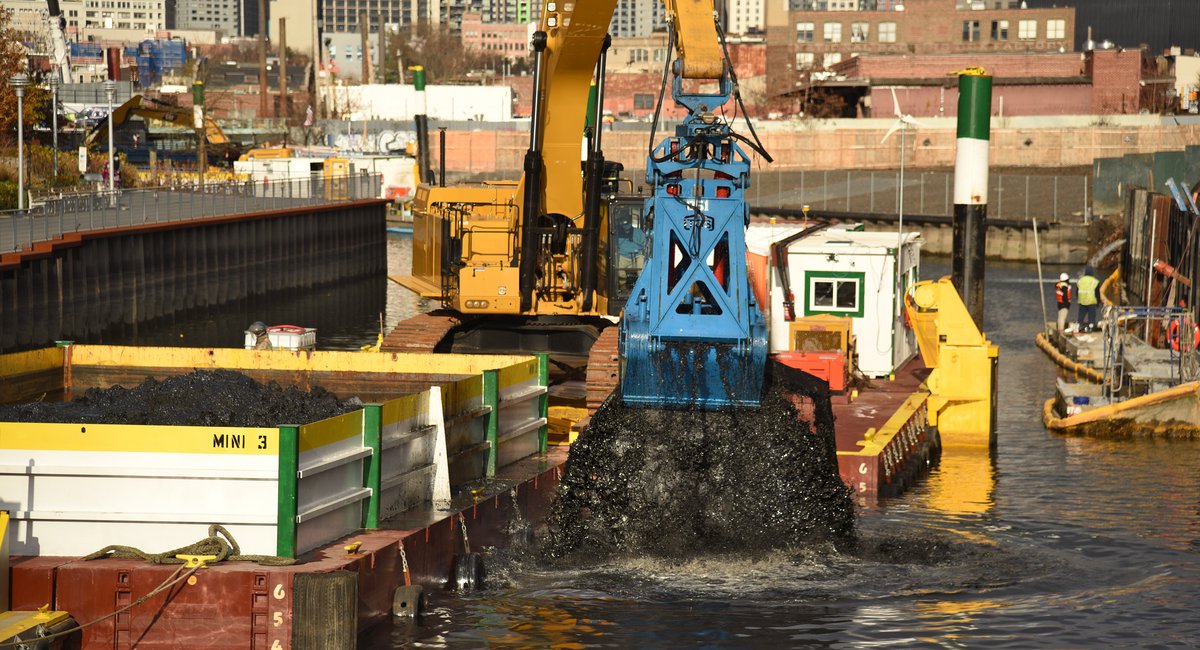The $1.5 billion effort to rid the Gowanus Canal of toxic sludge is so behind schedule and over budget due to government mismanagement that the canal may have to be re-dredged, according to the U.S. Environmental Protection Agency’s watchdog.
The fetid canal is in the midst of a cleanup involving the removal of 600,000 cubic yards of cancer-causing coal tar, and the construction of two combined sewer overflow tanks that would limit toxic waste in the waterway. But the project is more than six years behind schedule. Its budget has ballooned to 13 times its original $78 million projected cost and the tanks still haven’t been installed.
The EPA’s inspector general wrote in a report last week that toxic sewage is still being dumped into already-cleaned parts of the canal during heavy rains — exposing residents to contaminants and raising the possibility those sections will need to be cleaned again.
“New York City will incur additional expenses if already dredged portions of the canal need to be re-dredged to remove sediments deposited by [combined sewer overflows] that would have been contained in the CSO tanks, had they had been constructed on time,” EPA Inspector General Sean O’Donnell wrote in his audit.
About 60% of the city uses a combined sewer system, which collects stormwater runoff, domestic sewage and industrial wastewater in the same pipe. Under normal circumstances, that water goes to a treatment plant. But during heavy rain, the amount of water exceeds the pipes’ capacity and raw sewage is dumped into waterways, such as the Gowanus Canal.
The canal is one of the nation’s most seriously contaminated bodies of water, according to the EPA. Tanneries, oil refineries and numerous other industries in the area began using it as a dumping ground in the 19th century. It was placed on the EPA’s Superfund list of heavily contaminated sites in 2010, which initiated the cleanup process. Companies responsible for the contamination help foot the bill.
The…
Read the full article here

Leave a Reply